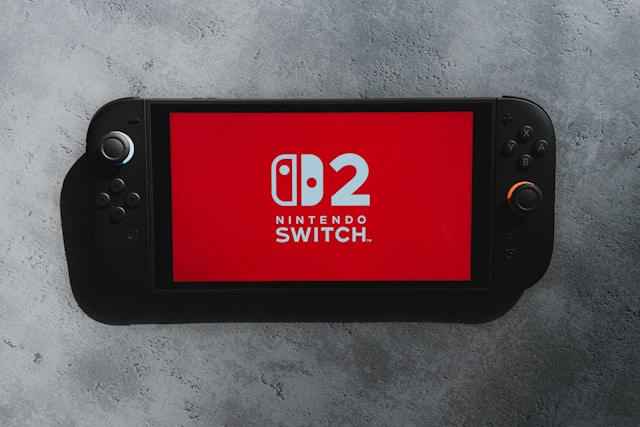At 7 a.m., the Yamanote Line is a sea of thumb-taps. One passenger blasts jewels in Royal Match; another pulls a gacha roll in Genshin Impact. Wedged between them, college student Rei Ishikawa props open a brand-new Switch 2, its seven-inch screen bright enough to turn heads. “Mario Kart World on the go,” she grins, “beats grinding ads on my phone.” Her choice challenges an industry where mobile games generated $92.6 billion in 2024, accounting for 49% of the $187.7 billion global market.
Can a $450 hybrid console really snatch time and money from the world’s most common screen?

Photo by Kamil Switalski on Unsplash
Why Phones Became Gaming’s Cash Machine
Smartphones now total approximately 7.4 billion active handsets worldwide. That unparalleled reach underpins three reinforcing forces:
- 77% of Gen Z players game on mobile devices.
- Mobile-game in-app purchases rose 4% to 81 billion USD in 2024.
- Total mobile IAP across all apps surged 13% to 150 billion USD.
These dynamics turn idle minutes into micro-transaction gold. One-tap downloads and a seamless payment loop mean publishers capture “slack minutes” that no console can match. Against this backdrop of mobile dominance, Nintendo is making its move.
Nintendo’s Portable Strike
Switch 2 is built to invade those slack minutes. Early momentum shows:
- 5 million units sold in its first four days.
- Nintendo forecasts 15 million shipments in FY 2025-26.
- DFC Intelligence projects sales of 16 million units in 2025 and over 100 million units by 2029.
- Ampere Analysis expects a 49% share of active consoles by 2027 and 2 billion USD in software sales this year, rising to 7-8 billion USD by 2027.
If the number of hardware reaches those levels, Switch 2 will still represent less than 1% of global smartphones, but each unit will be a portable portal for premium experiences.
“We view Switch 2 less as a threat than as proof that players crave flexible play styles,” noted an MPL spokesperson. “When gamers jump between touchscreens and controllers, the real winner is any platform that delivers fresh content fast.”
Portability Wins Attention, Not Wallets
The portable showdown isn’t new. In 2004, the Nintendo DS outsold Sony’s PSP roughly two-to-one, but couldn’t stop Snake’s spread on early mobile devices. In 2011, Nintendo doubled down on a “buy once, play forever” model with the 3DS, relying on strong first-party hits and a premium sticker price.
A year later, the iPhone 5’s launch and Clash of Clans’ runaway success sealed free-to-play microtransactions as mobile gaming’s money machine.
Switch 2 melds those approaches: you pay up front, but you still get a full digital store, complete with optional in-game purchases, wherever life takes you.
Beyond Revenue: Design Ethics and Culture
Mobile’s free-to-start economy exploits loot boxes, stamina timers, and endless ads. Europe is tightening regulations on those mechanics, while Nintendo sticks to 60 USD, ad-free releases. This ethical stance could appeal to a segment of the market disillusioned with mobile’s monetization tactics, offering Nintendo a unique selling proposition.
The Likely Scoreboard
The data is clear: smartphones will continue to be the financial powerhouse of the gaming world. Yet, the Nintendo Switch 2’s impressive early performance offers a powerful counter-narrative. It shows that while mobile thrives on volume and micro-transactions, there remains a robust market for a premium, ad-free gaming experience designed for depth and genuine ‘play,’ not just ‘time-killing.’ Nintendo isn’t competing for every idle minute, but for the minutes players truly value, demonstrating that even against mobile’s colossal scale, a dedicated, high-quality portable console can still capture significant mindshare and unlock substantial revenue in its own right.

